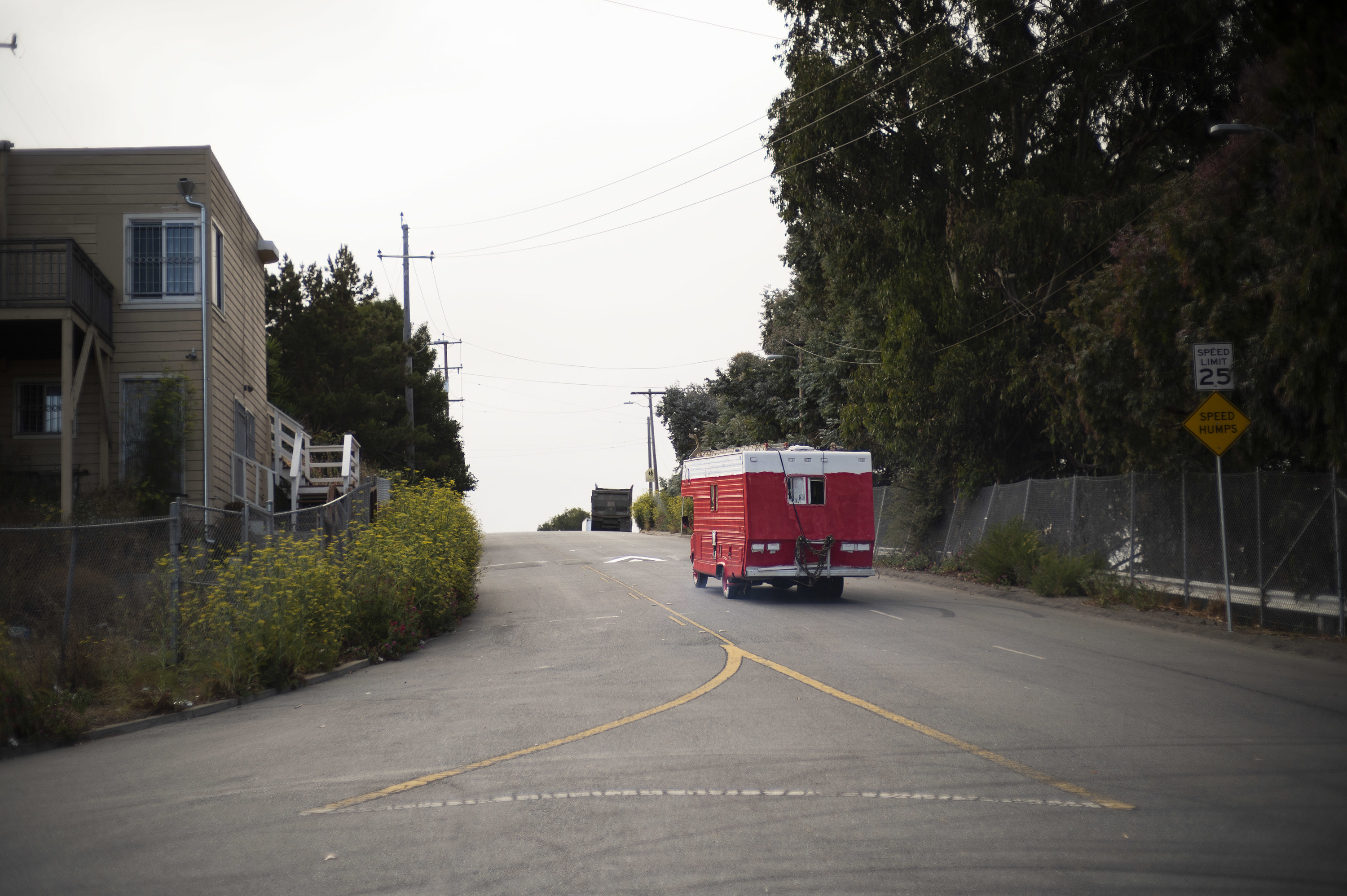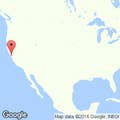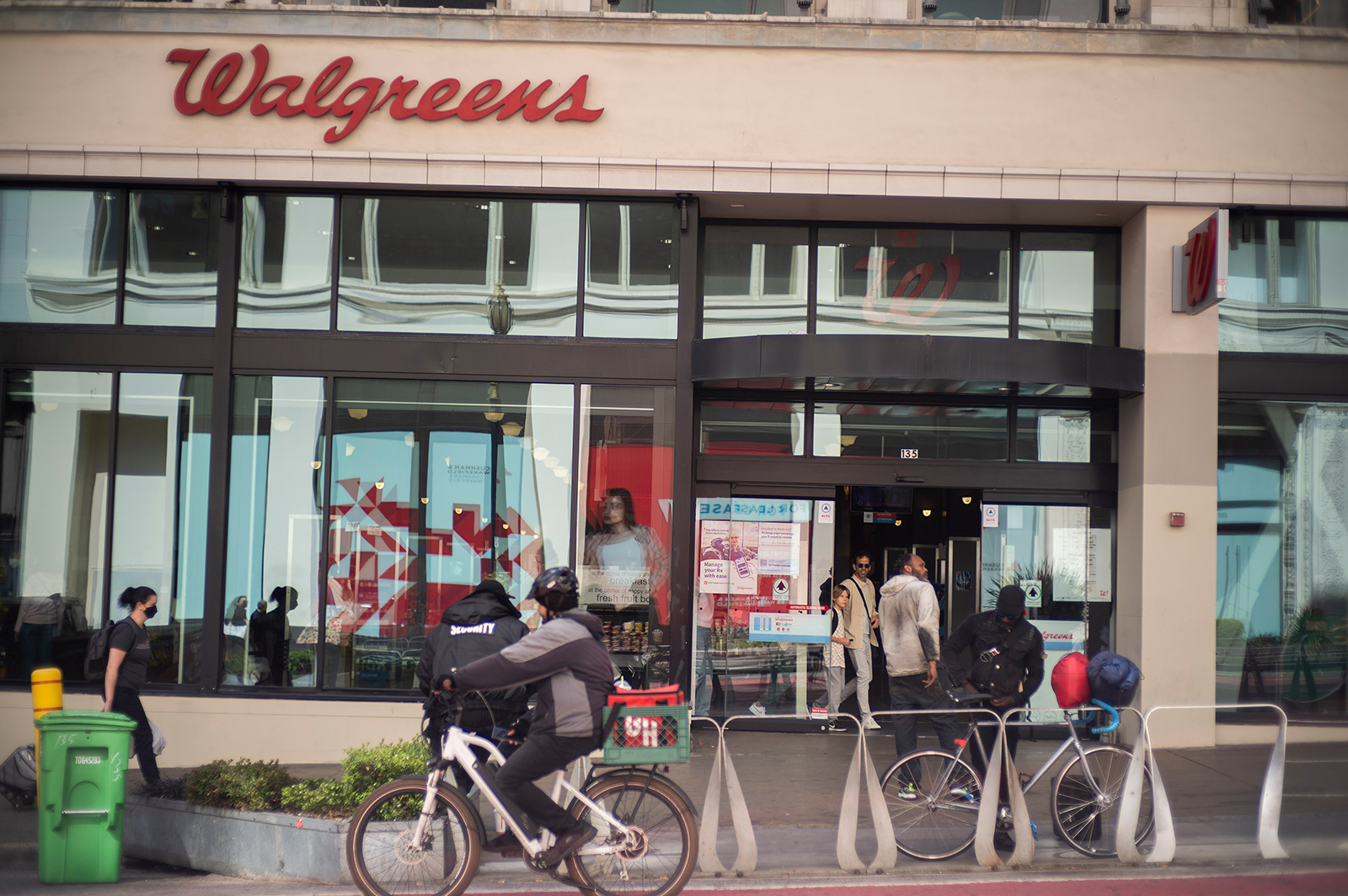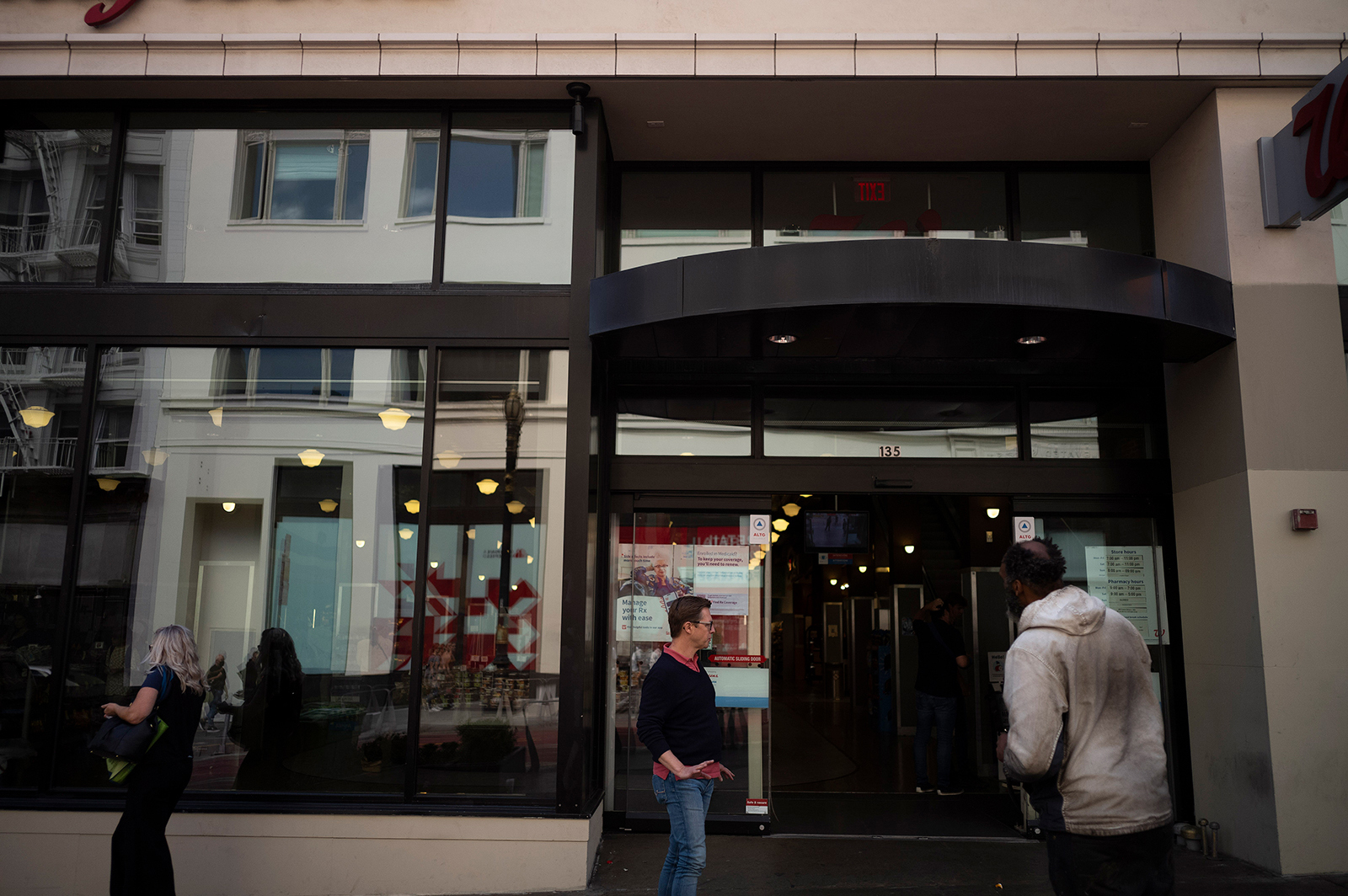SAN FRANCISCO — Jordan Smith had dreamed of living in San Francisco for as long as he can remember. He grew up in Stockton, a flat industrial suburb surrounded by agricultural fields in the Central Valley where his mom was a third-grade teacher, his dad a civil servant. Smith had what he described as “an almost Norman Rockwell–like childhood.” When his mom would take him to visit San Francisco an hour-and-a-half drive away, he’d put on his Sunday best — button-down, slacks, shiny shoes, and a blazer to ward off the wind chill.
“My mom always said, ‘When you’re going to San Francisco, you gotta dress up because it’s what you do when you’re going to the city,’” recalled Smith, who is now 42. “There’s so much different people and different cultures and different lifestyles in the city. Just taking it all in was amazing.”
Each time they crossed the Bay Bridge and the undulating, glassy skyline emerged over the shimmering water, his heart raced, and each time the city receded in the rearview mirror at the end of the day, he was filled with longing.
In his 20s, he went to culinary school in the city and then worked at a restaurant downtown, but he could afford to live only across the Bay, in Oakland. After the restaurant closed, he moved back to Stockton, bounced around restaurant jobs, and then began commuting into San Francisco to work as an Uber driver. To stay in the city, he started living in his car. Then in 2015, he bought a used RV from a friend for $500 and parked it on a secluded block behind a FedEx facility in the Bayview neighborhood, a residential pocket lined with housing projects and an abandoned shipyard, tucked away in San Francisco’s southeastern corner. Finally, he had made the city his home.
But he couldn’t escape a sense of precarity, the anxiety that the city he adored was constantly trying to push him out. In late 2020, his financial circumstances were as dire as they’d ever been. He went to sleep hungry because he couldn’t afford food and cold because he couldn’t afford propane to heat his RV. By the end of the year, he had come to the conclusion that the only way for him to stay in the city was to steal.
One night in January 2021, he drove up to a big sleek warehouse that houses servers for a data center. He snuck through a hole in the fence behind the building, where he found a roll of copper wire. He unspooled it, pulled the wire back out to his car, hooked it to his bumper, and then lightly pumped the accelerator. Once he’d dragged out “a hefty portion,” he said, he cut the wire with pliers and began stuffing his bounty into a container attached to the top of his car. That was when the police showed up.
“I’m sorry I took the wire, times are tough right now,” Smith remembers saying to the two officers. “I’m not getting unemployment money, I’m hungry, I’m cold, I’m just trying to make ends meet.”
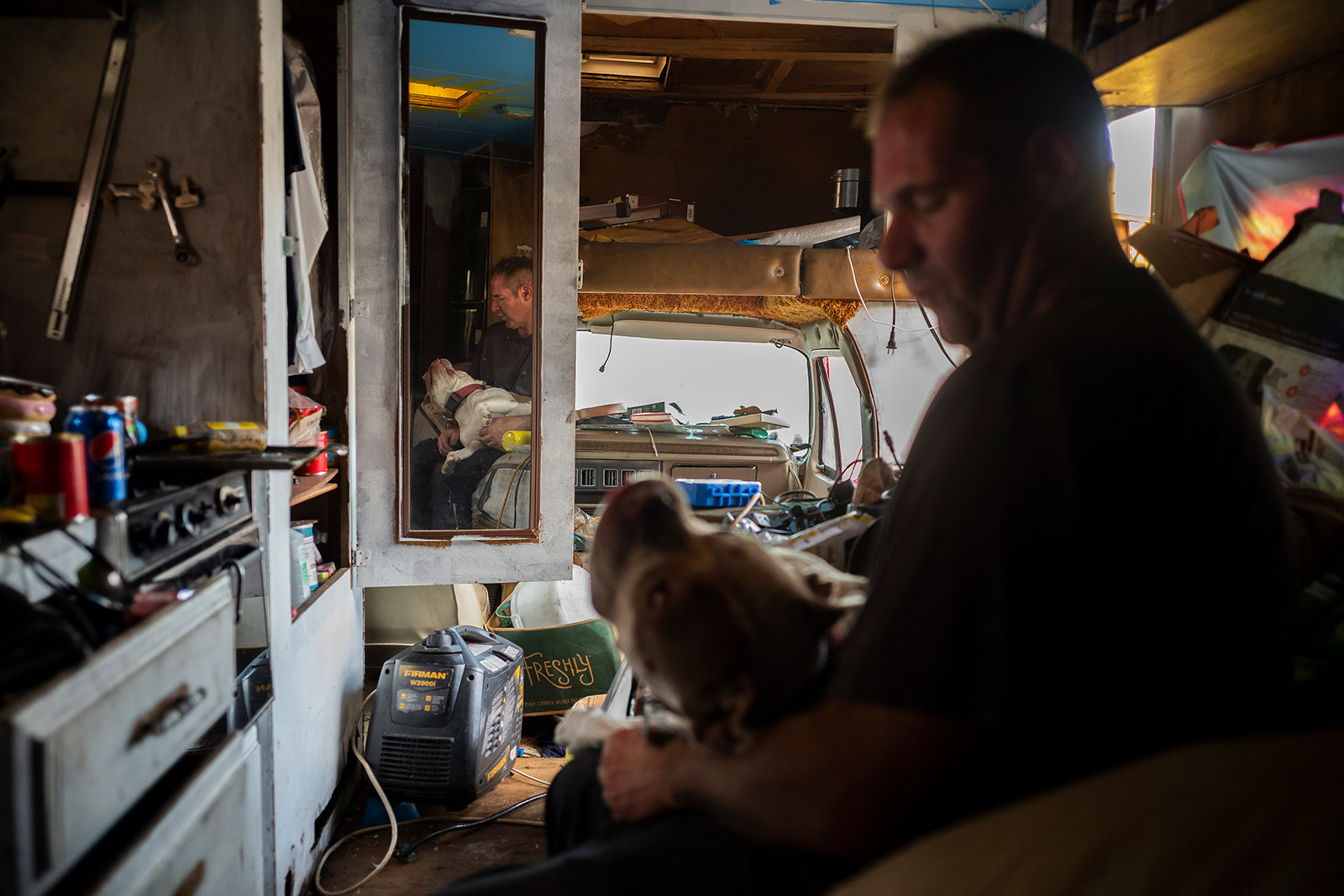
At his trial this June, he was convicted of misdemeanor petty theft, one of the thousands of larcenies at the center of claims that a crime wave is washing over the city.
By then, a well-funded campaign had blamed Chesa Boudin, the district attorney at the time, for being too soft on crime and called for his removal. The Committee Supporting the Recall of DA Chesa Boudin announced its existence in December 2020 with a statement recounting an incident when a drunk driver killed two pedestrians. The accused was on parole for an armed robbery conviction, and Boudin had declined to file charges against him after he was arrested twice within the previous eight weeks, first on suspicion of auto burglary, then car theft. The campaign gained momentum throughout 2021 and was backed by high-profile venture capitalists, including a former Facebook executive, a PayPal cofounder, a Golden State Warriors co-owner, and an Uber investor who claimed the prosecutor had ushered in “Escape From New York-level, Gotham City-level chaos,” as Mother Jones reported. Safer SF, an advocacy group raising money for the recall effort, described itself in emails as “a coalition of Democratic leaders, small business owners, parents, and citizens” exercising their democratic right to recall “our failing District Attorney.”
“I’m not getting unemployment money, I’m hungry, I’m cold, I’m just trying to make ends meet.”
Boudin, a former public defender who took office in January 2020 after campaigning on ending cash bail requirements and cracking down on police misconduct, had built his career pushing against long-standing tactics that prioritized punishment over rehabilitation. He was the latest in a generation of district attorneys nationwide who’d come of age during the tough-on-crime era of the 1990s, recognized the harm it caused, and moved to reinvent the role of prosecutor as crime rates reached record lows in the 2010s. Some of the city’s most powerful residents rallied against Boudin, saying San Francisco had come to represent the perils of leaving government in the hands of bleeding-heart progressives.
“We have a very big problem with ultra-left wing elected officials in city hall who … have perpetuated this malignancy in the city which we love,” wrote Richie Greenberg, a former mayoral candidate who spearheaded the Boudin opposition. “People have died under Chesa Boudin's watch. Lives have been ruined, families broken, business shuttered.”
Viral videos showing shoplifters and burglars pilfering goods in plain view have fueled public perception that crime is rising in the city. In one from last year, a man walks his bike through a San Francisco Walgreens while taking items from shelves. In another, nine people run out of a Neiman Marcus carrying armfuls of luxury handbags. In a clip the UK’s Daily Mail described as “sickening footage,” a man fills a suitcase with batteries, gift cards, and other items from the shelves of a CVS. And in maybe the most shocking episode of the bunch, a video from November shows a group of people shattering car and storefront windows in the Union Square commercial district on their way to steal goods from Louis Vuitton, Yves Saint Laurent, Burberry, and Balenciaga, a spree the San Francisco Chronicle called a “wild rampage.”
In October 2021, Walgreens claimed that the prevalence of “organized” shoplifting was so bad that it felt compelled to shut down five stores in the city, conveniently omitting that the company had been planning on closing stores around the country since 2019.
Annual polls conducted by the San Francisco Chamber of Commerce showed that the percentage of respondents who named crime as a “major issue” rose from 26% in 2020 to 46% in 2021 to 55% in 2022 — though, to give you a sense of the survey’s participant pool, fewer than 20% were “concerned about housing affordability.”
News stories chronicled a city succumbing to lawlessness as the pandemic destabilized people’s financial circumstances.
“Shoplifting has spun out of control in San Francisco,” a New York Times article asserted in May 2021.
“San Francisco confronts surging crime, drugs and homelessness,” a CNN headline blared the next month.
Boudin “was making the citizens of our city miserable in service of an ideology that made sense everywhere but in reality,” an essay in the Atlantic argued in June 2022.
On June 7, Boudin lost the recall election, with 55% of voters going against him.
All that might lead you to believe that the city is quickly spiraling into disorder. The statistics, though, say otherwise: While the number of burglaries and auto thefts went up from 2019 to 2021, property crime overall dropped by 14% and was lower in 2021 than any year since 2012, according to the city’s data. The number of homicides ticked up to match the 2017 rate, but robberies declined by 26% from 2019 to 2021, and overall violent crime in 2021 was at its lowest rate in over a decade.
San Francisco has long been a place shaped more by perceptions than facts. Since Europeans first invaded the peninsula three centuries ago, countless new arrivals have projected their fantasies onto the city, a boomtown for conquistadors seeking glory, gold rushers seeking riches, immigrants from East Asia seeking stability, Black families in the Great Migration seeking equality, flower children seeking peace and love, digital-age barons seeking a citadel for their empire — all hoping to make the city their own.
Jordan Smith came seeking little more than to be a part of it. But this is a city that leaves behind those who can’t hang on, always ready to welcome the next batch. Smith embodies a question that’s core to San Francisco: What does it take to stay?
For some, the answer is stealing. Peter Calloway, an attorney at the city’s public defender's office who has represented hundreds of people accused of theft in recent years, said that his clients “are primarily people stealing things for basic needs they can’t afford.” He recalled one defendant who walked barefoot into a store to steal shoes, another who took a jacket from a rack on a blustery, cold day, and many more who ran off with food or diapers. If the rising fears among property owners are reflective of anything, it’s the rising desperation among the dwindling pool of locals holding on to a city that continues to drive out its most marginalized communities.
If the city is about to become cleaner and safer, we won’t be around to enjoy it.
I spoke with Smith because I wanted to hear the perspective of people behind the property crimes that have garnered so much attention. No single experience can be wholly representative, but what struck me about Smith was his devotion to a fantasy I once shared but was losing faith in. I met him at a time when my own family was confronting the consequences of the city’s allure. Last year, my cousin Jed and his wife left the city for Sacramento, where they could afford more space to raise their two kids. Earlier this summer, a moving van pulled up to my mom’s place in the Fillmore District and ferried her possessions across the bridge to her brother’s house in Vallejo because we could no longer afford to pay rent in the city where our family first landed from the Philippines. If the city is about to become cleaner and safer, we won’t be around to enjoy it.
But Smith might, because he refuses to leave.
“The city’s changed a lot since I first started coming here,” he said. “But it’s still San Francisco. I don’t want to be anywhere else.”
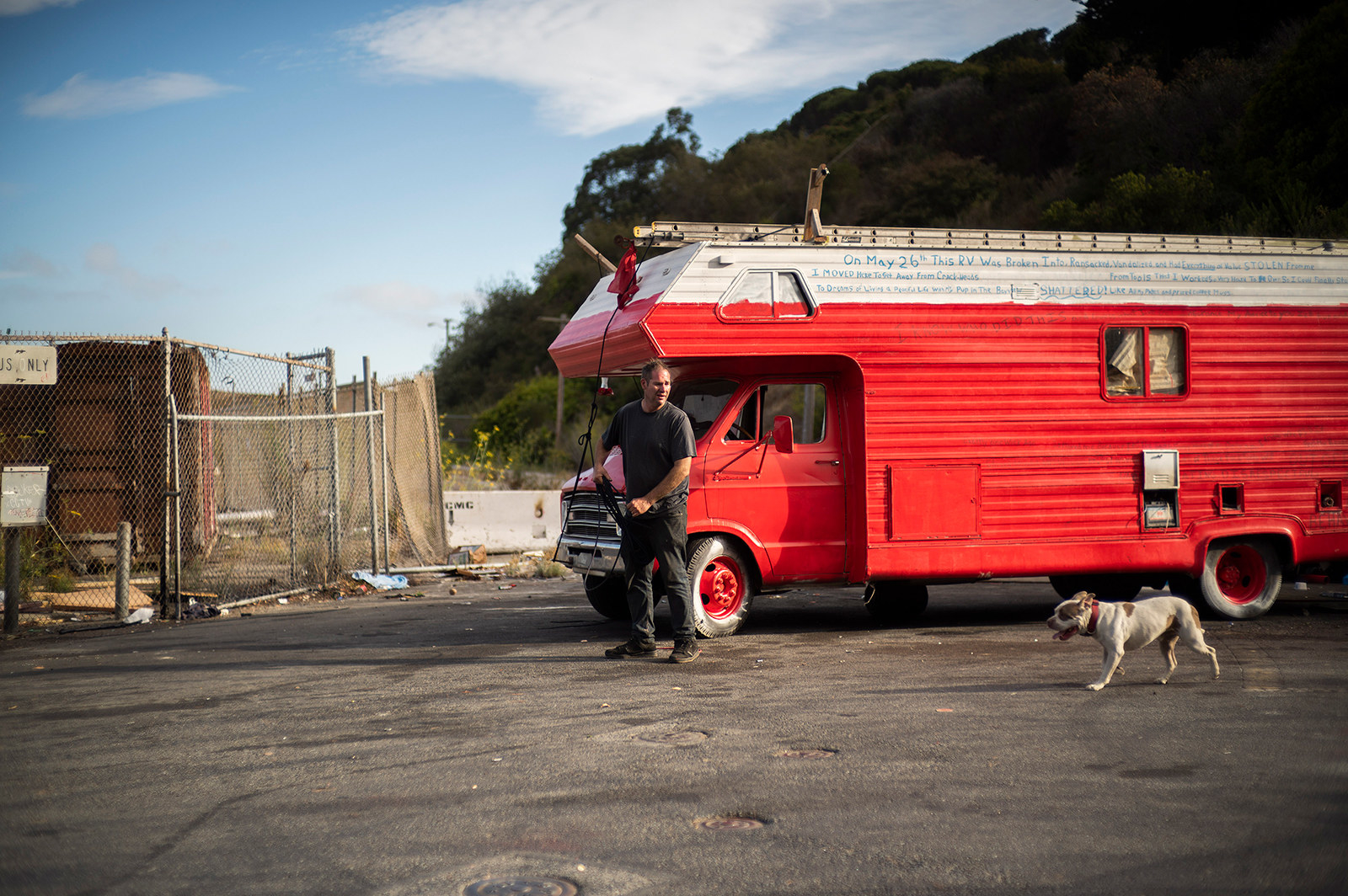
Smith’s favorite thing about the city, he said, is the weather. While Stockton’s temperatures reach over 100 on summer days and below freezing on winter nights, San Francisco stays cool and breezy year-round — “the best climate of anywhere on the planet, as far as I'm concerned,” he said.
He first tried to live in the city in 2006. After enrolling in culinary school, he moved into the dorms and worked part time as a cook.
“On the weekends when we got paid, we would pick a direction and hit up every bar and restaurant we came across,” he said. “It blew my mind. A big city with big city movement, fast-paced, and everybody had purpose and was driven and was going places. And there were all these little hidden gems all around. It’s amazing how much diversity there is in such a small area.”
After graduating, he moved into a friend’s apartment in Oakland and worked at a restaurant in San Francisco. The restaurant shut down a few years later, around the same time his grandma died, so he returned to Stockton to live with his mom.
With local zoning laws protecting the city’s natural beauty and property values, preventing buildings in most neighborhoods from rising more than 40 feet, San Francisco carries a finite housing supply. Did you know that the population of San Francisco — capital of the hippie influx and the tech boom — increased by just 100,000, or 13%, from 1950 to 2020? By comparison, New York City and San Diego grew by a million people, Houston and Los Angeles by around 2 million; Seattle has doubled in size; Phoenix has expanded tenfold. To see evidence of the Bay Area’s 21st-century expansion, you have to look to the surrounding municipalities, the sprawling subdivisions unfurled across Daly City, Gilroy, Dublin, San Jose, and the other suburbs catching the metropolitan spillover.
For Smith, the tech industry seemed to bring opportunities. In 2014, though he had a new job with a catering company in the South Bay, he signed up for Uber, which he saw as a way to get him back into the city. Nearly every day, he commuted in the mornings from Stockton to Foster City for his day job in catering, and then to San Francisco in the evenings to drive passengers around the city. Soon, he quit his job and did ride-hailing full time to simplify his schedule. Some nights, he didn’t want to leave the city, so he slept in his car, covering his windows with T-shirts and becoming adept at finding the dead-end streets where he could park his car without having to worry about anyone calling the police.
He looked into applying for a Section 8 housing voucher, which would cut his rental dues to 30% of his income, but the waitlist was long and processed through a lottery system. On his drives around the city, though, he began noticing more and more RVs parked all over the place, including a particularly dense cluster of around 20 mobile homes on a quiet stretch of road in the Bayview neighborhood.
By then, the Bayview had become an epicenter of resistance against the displacement sweeping across the city. Moving into the camp, Smith found a community of people committed to staying in the city, some holding tight to their San Francisco fantasy, others just trying to survive day to day.
“Everybody was looking out for everybody else,” he said. “Trying to carve out their own little niche without having to deal with the extremely high rent.”
When one neighbor said that he could no longer afford to take care of his dog, Smith adopted the pit bull, whom he named Doobie. Some nights, he’d park his mobile home in the nearby lot that used to serve Candlestick Park before the Niners moved to a new stadium in Santa Clara. The lot offered plenty of room for Doobie to run around. For years, Smith had no problem making ends meet.
Though the RV offered just 320 square feet, “it was very comfortable because it was mine,” he said.
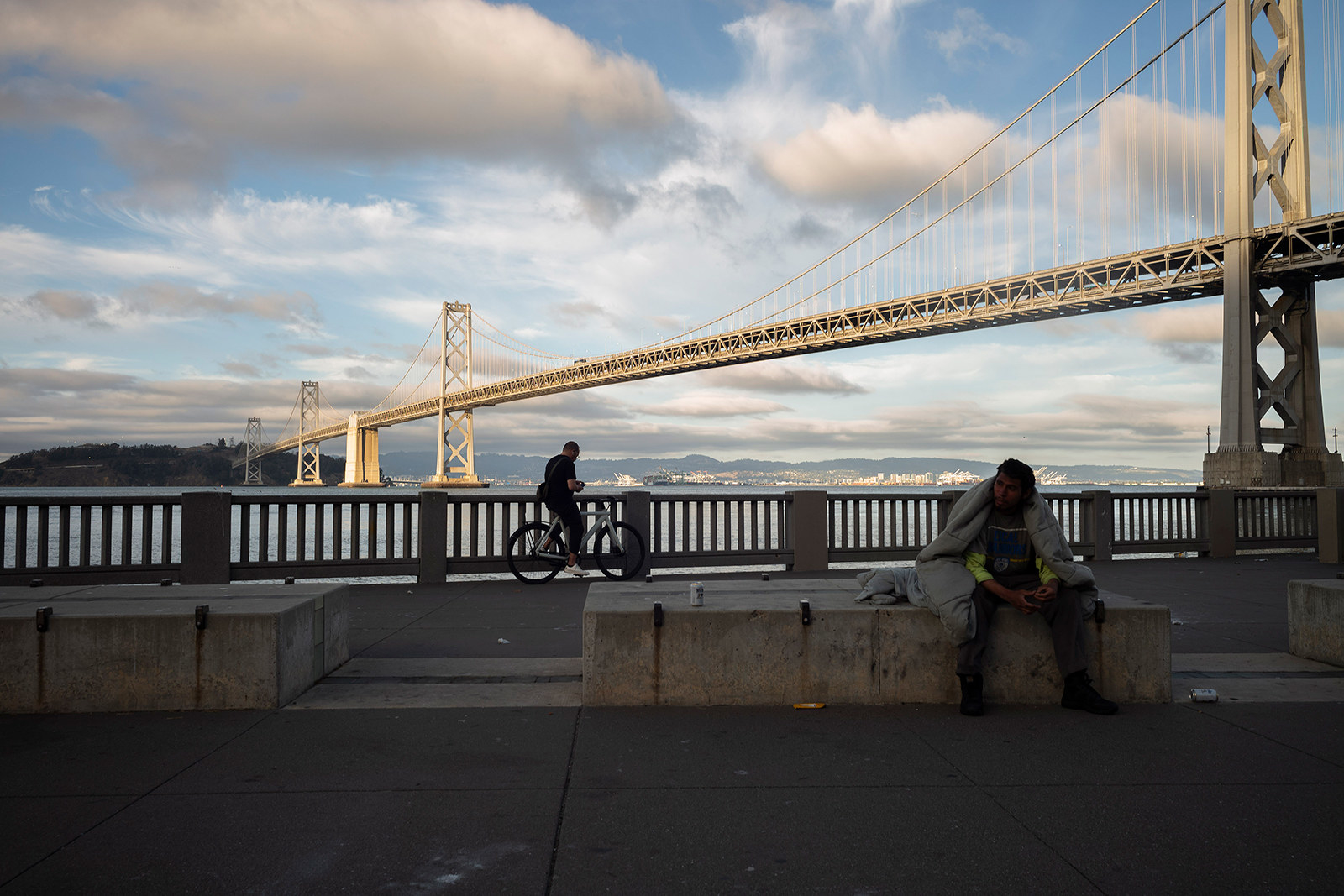
Like Smith, I saw my San Francisco fantasy bloom on the westbound lanes of the Bay Bridge.
My family’s roots in the city trace back to the late 1940s. My grandauntie Caridad migrated with a visa granted after she served in the US military during World War II, when the Philippines was an American territory. She and her husband bought a duplex in the Fillmore District in 1957, when it was a segregated, predominantly Black neighborhood. A generation earlier, the area housed a mostly Japanese population — but after the federal government incarcerated Japanese Americans and Japanese immigrants, the hollowed-out neighborhood became one of the few places newly arriving Black families could settle. Soon the Fillmore District became known as the Harlem of the West, drawing jazz stars to bebop clubs until the city’s “urban renewal” plans in the 1960s evicted families through eminent domain, replacing single-family homes with housing projects and empty lots that stayed vacant for decades because investors had little interest in putting their money into a predominantly Black community.
Caridad’s Fillmore house was spared the wrecking ball, but the lot at the end of her block would still be vacant when my mom’s generation crossed the ocean in the 1980s. At that point, crime rates were reaching record highs, the crack cocaine epidemic was destroying communities nationwide, the war on drugs was imprisoning a generation of breadwinners, and President Ronald Reagan was cutting the highest tax rate from 70% to 28%.
Homeownership in the city wasn’t much of an option for most newly arrived immigrants with savings accounts shrunken by currency exchange rates. After initially renting an apartment in the quiet and quaint Richmond District, my mom and her sisters looked elsewhere for long-term stability. One auntie, my cousin Jed’s mom, moved northeast across the Bay to Vallejo; another auntie, south on the peninsula to San Mateo. My mom and I went farther inland, to Sacramento in 1999. On Christmas, we’d all gather at Caridad’s house back in the city.
Those westward journeys got my serotonin pumping.
Those westward journeys got my serotonin pumping. I’d lay out my clothes days in advance and rise early to ensure we maximized our time in the city, which seemed to embody the promised land at the center of our immigrant aspirations. Through my eyes, it was vibrant and perfect, with bustling parks, a reliable public transportation system, and seductive vistas at intersections where the buildings parted to reveal the sparkling blue bay. You could cross an alley and be transported from the beat cafés of North Beach to the dim sum restaurants of Chinatown; barely a mile separated the mariachi bands marching through Mission District burrito joints and the old Barbra Streisand films playing in the Castro District’s famous theater.
More than a decade passed before I lived there again. After bouncing around for college and work, I returned for a job at SF Weekly in 2012. My $36,000 salary made it impossible to find an apartment in the city, so I commuted from my uncle’s house in Vallejo, rising at 5 a.m. for the two-and-a-half-hour crawl through the morning rush. The view over the bridge filled me with yearning and sleepy-eyed frustration.
Then, a few months into my new job, the tenants living in the upstairs unit of Caridad’s duplex moved out. My cousin Jed and I moved in, paying rent far below market value and helping look after our grandauntie. Jed, a nurse who worked at a hospital in the city, had been commuting in from the much more affordable Burlingame, 17 miles south. Our return to the city felt like the culmination of generational efforts to make the city ours again.
It was a thrilling time to be back in San Francisco. The Giants won their second World Series in three years with a star pitcher who openly smoked weed. The 49ers made it to the Super Bowl on the back of a rookie quarterback who kissed his tattooed biceps when he scored a touchdown. We had to BART over to Oakland to see the Warriors play live, but they were winning playoff games thanks to the brilliance of a point guard who had barely an inch on our tallest uncle.
Most directly relevant to our daily lives, the neighborhood around our grandauntie’s house was quickly accumulating venues that served our specific needs. Morning cappuccinos with $7 toast at the Mill. Spicy margarita pitchers and a wall of HD televisions at the San Francisco Athletic Club. Gourmet burgers at Nopa. Yes, we also got late-night carne asada super burritos from El Ranchero because we were real-ass dudes who stayed true to our principles. But have you tried the slow-cooked Millionaire's Bacon at Sweet Maple? My immigrant elders didn’t sacrifice for me to be passing that shit up. This was our city, after all. Mark Zuckerberg had just purchased a $10 million house in the Mission District. Was it not radical for us to go $15 cocktail for $15 cocktail with the carpetbagging tech bros who had poured in for jobs with the corporate titans and big-swinging startups that were making base across the peninsula?
One day, I got a tip from a newly arrived resident about what he described as a crisis on Market Street, downtown’s main commercial thoroughfare. Each day that he walked to and from work, groups of weed dealers interrupted his serenity by hawking their goods right in his face. He was outraged. I was thrilled. As a reporter on the criminal justice beat, I’d been searching for alleged criminals with whom I could discuss the nuances of justice. I immediately embedded with the hustlers who set up shop on Market and Jones.
These men literally stood at the center of the city’s changes. To the west of their corner was the Tenderloin, where I first saw someone injecting heroin into their arm and witnessed someone taking a shit in the street before noon; to the east, Twitter’s corporate headquarters and high-ceilinged SoMa bars decorated with art you could buy if you had a couple grand to spare.
The hustlers were involved in a dying trade. By then, obtaining a medical weed card was as easy as a 10-minute meeting in an unmarked doctor’s office, and most of the dealers I met had one. Only tourists and teenagers were still buying weed on street corners in San Francisco.
I left the city willingly in summer 2013 for a job in New York City, moving into a Brooklyn neighborhood I had no roots in. The following year, Caridad died. My mom moved into the downstairs unit, and Caridad’s daughter-in-law inherited the property, maintaining the family discount, which we could comfortably afford until my mom lost her job early in the pandemic.
The city was bustling when I visited to help her move this summer — dim sum joints filled to capacity, Fisherman’s Wharf docks brimming with tourists, Pacific Heights parks thick with weed smoke, long lines outside bars showing Warriors playoff games. The corners on Market Street, though, were empty.

Smith could never feel completely welcome in the city. Every few weeks, police officers would drop into the Bayview RV camp and give everybody 72 hours’ notice that they had to leave because people were not allowed to park there permanently. The first time it happened to Smith, he said, “It was a little bit heartbreaking ‘cause we had formed like our own little neighborhood.” They’d disperse. Some returned within a few days. Stability felt out of reach.
Smith struggled to control his anger. His ire occasionally targeted the customers he was serving. Uber passengers who talked to him rudely. Anyone who treated him like he was inferior for being somebody who serves and not somebody who gets served. Like he was just part of the city’s infrastructure. Like the only reason he was in San Francisco was to make sure its most cherished residents were comfortable.
“I had a hard time channeling emotions effectively and properly,” he said. “It made everything kind of a blur.”
Once, he kicked someone out of his car after a dispute, he said. The passenger filed a complaint, and Uber kicked Smith off the app.
“Sometimes you get those bad seeds who aren’t having a good day, and unfortunately sometimes that affects your ability to continue on the platform,” he said.
He now takes anger management classes that help him “deal with it and release it in a healthier manner, in a way that doesn't scare people,” he said, “and I'm able to let go of things a lot easier now.”
But the damage was done. He returned to restaurant work, but when the pandemic hit and those businesses closed or downsized, he no longer had his driving gig to turn to.
He survived on unemployment benefits over the first several months of the pandemic. “Then all of a sudden, in the middle of October 2020, the Employment Development Department decided I no longer needed my unemployment money and they cut me off,” he said. “I was sending emails every day trying to figure out why I was no longer allowed to get benefits.”
His budget was stretched thin. He bundled up on chilly nights without propane. There were at least a few days he was so hungry, he said, that he ate dog food.
“When you’re cold and hungry for weeks, and there’s nothing coming to turn that around, you do what you have to.”
He began standing at intersections, holding a cardboard sign asking for money. He never made more than a few dollars in a day. It was hard enough just to get anyone to meet his gaze. He could see in the way they held their necks so stiffly that the people in those cars were dead set on pretending he wasn’t there trying to get their attention. He wondered if his sign wasn’t witty enough. He tried to change his appearance to catch more sympathy. “I’d rub dirt on my face and dirt on clothes and make myself look poor and unkempt,” he said. “It just felt so wrong.”
He remembers his breaking point. After waiting in a long line at a food pantry, he reached the front and learned he wasn’t going to get anything.
“I was turned away because I hadn’t registered at some faraway place I never heard of,” he said. “I was about to eat my shoe.”
He could follow the instructions and return the following week, but he was hungry now; more than that, he was simmering with outrage that in a city overflowing with wealth, he was going to bed hungry and cold. He was no longer on the outside looking in. He was on the inside, feeling invisible.
“When I heard about this place that had these spools of wire, I thought, fuck it, I’m gonna go get some of that wire,” Smith said, noting that copper was going for five bucks a pound. “I knew that I could sell the wire for a decent amount of money where I could get myself some food and propane and heat up my RV. When you’re cold and hungry for weeks, and there’s nothing coming to turn that around, you do what you have to.”
He was stealing from some corporation’s executives, he reasoned, and whatever he took, their insurance would repay. Surely they already had more than enough.
Back in the city this summer, I was eating dinner at a table on the sidewalk outside a fancy Chinese restaurant when a young man in tattered clothes walked up and started talking to all of us there. Every diner immediately went quiet.
He wasn’t asking for money, he said, he just wanted to be seen. My guard shot up.
Live in San Francisco long enough and you develop the habit of sizing up anybody who looks like they have nothing to lose. The city is too small and cramped to hide the desperation it spawns. Once, a guy followed me and a girlfriend for so long that I had to turn and say some loud shit to ward him off. Another time, when I was having breakfast at a diner, a man with a steak knife came in and started yelling incomprehensibly at the server behind the counter; I envisioned myself fending him off with a chair, but the police showed up and I didn't have to worry about it.
Outside the Chinese restaurant, the man spoke in a rhythmic cadence. I don’t remember his exact words, but I remember their substance sinking into my gut: Look at you all just sitting there, refusing to acknowledge me, eating meals that cost more than your electricity bill while so many people are starving. His tone wasn’t threatening or angry but professorial, and that made it all the harder to listen because I couldn’t dismiss him with a shrug and a sigh that communicated to anyone watching, “Man, this country is so fucked up, I hope this guy gets some help.”
Ten minutes in, he was still going strong, even as diners began to talk quietly, trying to shake off the thick slime of discomfort. All I want is to be acknowledged, he said, and none of you are willing to offer even that.
Then, suddenly, a white man who appeared to be on a date stood, walked up to the guy, gave him some cash, and shook his hand with a friendly nod. Another white man handed over a folded bill. Then another, and another.
Finally, I understood. This person knew his audience. He was operating in a city filled with people who gladly pay fees for a little more convenience: Ubers to avoid waiting for the bus, groceries delivered to a doorstep, spacious first-class flights. And what was more inconvenient than a reminder that people might be looking at you with resentment, hands in their pockets holding who knows what? That your luxuries rely on the labor of people who earn less in a year than you spend on a vacation? That, if you’re a responsible liberal who understands our tax system and feels bad about the state of America’s public services, you know damn well your disposable income comes at the expense of people you’d rather not think much about? Of course there was no shortage of diners willing to pay a few bucks so they could roll up the limousine window and return to the bubble: a simple act of generosity to confirm you’re one of the good ones.
After the cash poured in, the man left. A minute later, it was like he had never been there at all.
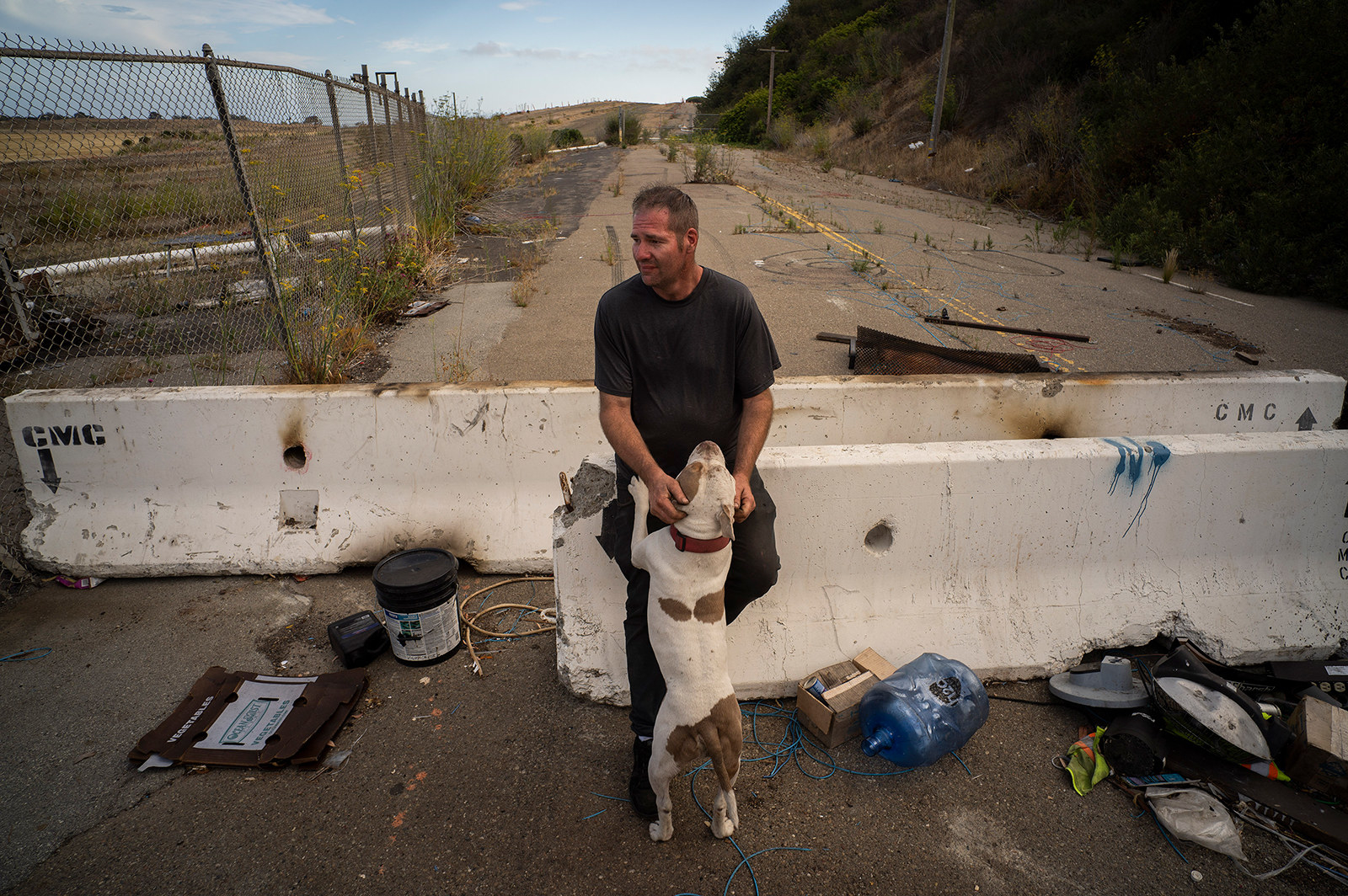
When Smith’s trial began earlier this year, his public defender argued for an acquittal based on the “necessity defense,” which specifies that a person committed a crime to fulfill a basic human need. But this turned out to be difficult to prove. The judge said that Smith had not exhausted all his options. Many people in the city go about their struggle without resorting to crime. He could have sold his car. He could have applied for more jobs. He could have signed up for Lyft. He could have gone back to the food pantry. The judge ruled that the jury could not take Smith’s financial desperation into consideration. The jury found him guilty. He was sentenced to probation. Boudin’s office didn’t push for jail time.
Smith continued to scavenge for scraps, recyclables, anything he could trade in for money. He scoured the website where residents can file complaints with the city to find incidents of people dumping things on sidewalks.
“You’d be amazed what people throw out in the back alleys of San Francisco,” Smith said. “Wire, pipe, aluminum, rebar, window frames.”
A few months ago, he was arrested in San Mateo County for taking a motorized pump from a yard. He said he didn’t know the yard was private property and thought the pump had been thrown away. “This pump looks at least 20 years old,” he said. He pleaded guilty to petty theft and was sentenced to 45 days in jail, which he was able to avoid by participating in a work program.
He is now looking for a different way to make an income. “Some of the things that go along with scrapping are borderline on the illegal side,” he said. “I want a little more security.”
He said he hopes to find full-time work again. He is currently waiting to hear back on an application for a job teaching people to cook.
“This job would be an extremely positive addition to my life,” he said. “I would be very passionate about it.”
But he did catch some luck recently. A man who lives in the RV camp stole some of his tools. The man has been in even tougher circumstances than Smith — he has no RV and sleeps in a tent — and he had stolen from him before, Smith said.
“The rule on the street is you don’t call the cops,” he said. “You handle it on your own.”
When Smith confronted him, the man hit him in the face with the blunt end of an ax, breaking his nose. Since the two of them live close to each other, Smith was approved for an emergency Section 8 housing voucher for people who have reason to fear for their safety. The voucher will cover a portion of his rent but can’t force a landlord to select him from the crowded field of apartment applicants, so he is still waiting to secure a place.
He said he feels good about the future. Things could have gone much worse for him if he lived somewhere else, he said, if he had committed his crime under the jurisdiction of a prosecutor who would have wanted him behind bars.
“I like the way the city is run,” he said. “They try to help people by not just incarcerating them. I have a chance to get back on my feet.” ●
